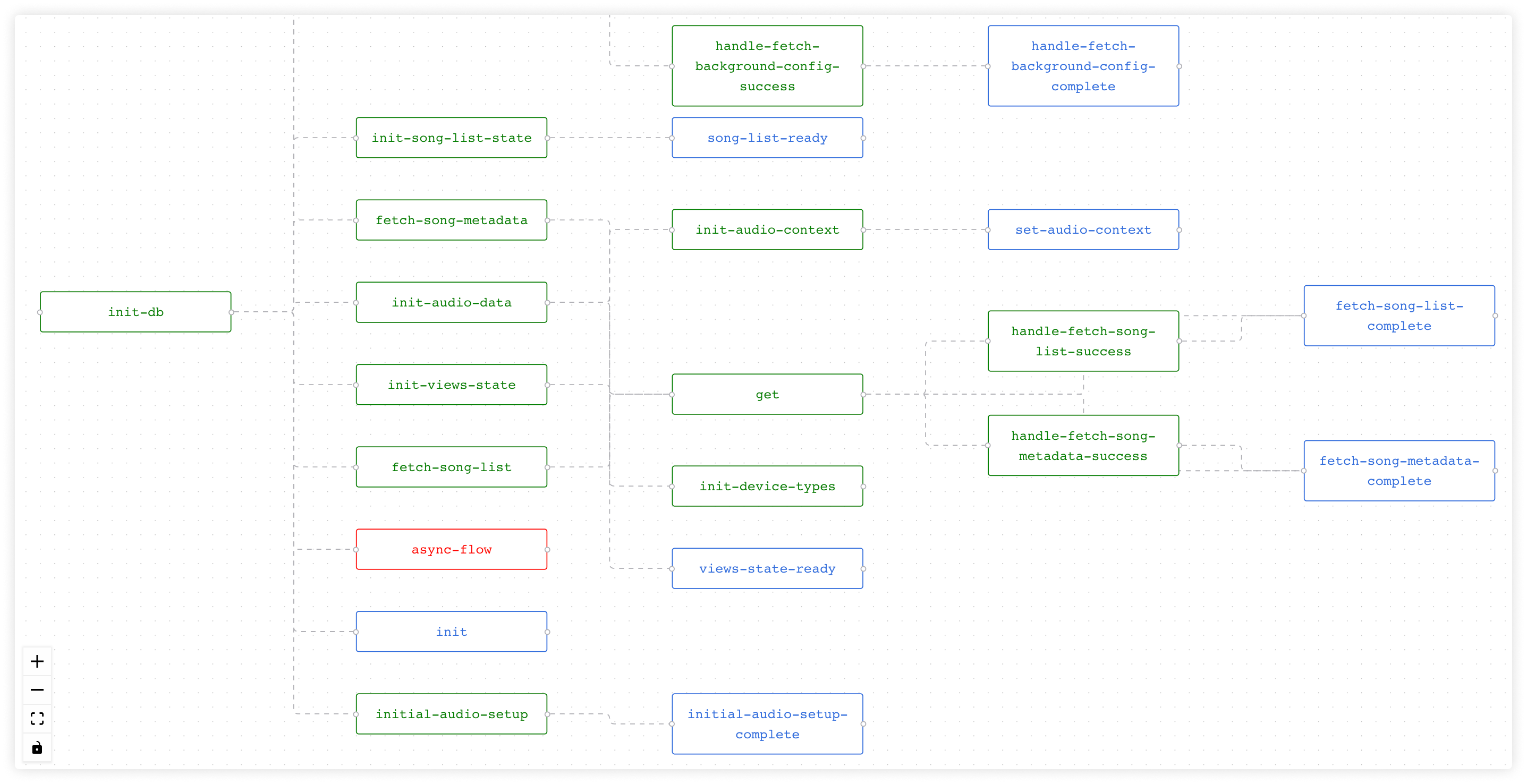re-frame-flow is a graph based visualization tool for re-frame event chains. Let's assume we clicked a login button and triggered a series of events. login-fx -> http-fx -> some-fx -> some-db-handler ... (event after event), so a path gets generated, re-frame-flow visualizes all paths in a graph.
- Add re-frame-flow to dev dependencies:
:profiles
{:dev
{:dependencies [[org.clojars.ertucetin/re-frame-flow "X.Y.Z"]] }}- Add
re-frame-flow.preloadto preloads:
{...
:preloads [re-frame-flow.preload]
...}- Make sure you have followed all of the installation instructions above.
- Start up your application.
- Once it is loaded, trigger some events (Flow panel gets updated when an event is triggered).
- Focus the document window and press ctrl-g to open the flow panel.
If you want to track the flow of dispatch and dispatch-sync, you need to use re-frame-flow's custom dispatch and dispatch-sync. ClojureScript does not provide *ns* at runtime, so these functions implemented as custom macros. Which means you can't pass around like they are functions.
- You need to move
re-frame-flowdependency from dev to prod - Update your dev
closure-definesinside shadow-cljs.edn-
:dev {:compiler-options {:closure-defines {re-frame-flow.trace.dispatch-enabled? true}}}
-
- Update your views (or any namespace that uses
dispatch)-
(ns app.views (:require [re-frame-flow.macros :refer-macros [dispatch dispatch-sync]] ...))
-
git clone git@github.com:ertugrulcetin/re-frame-flow.gitnpm installlein watch- Open http://localhost:8280
